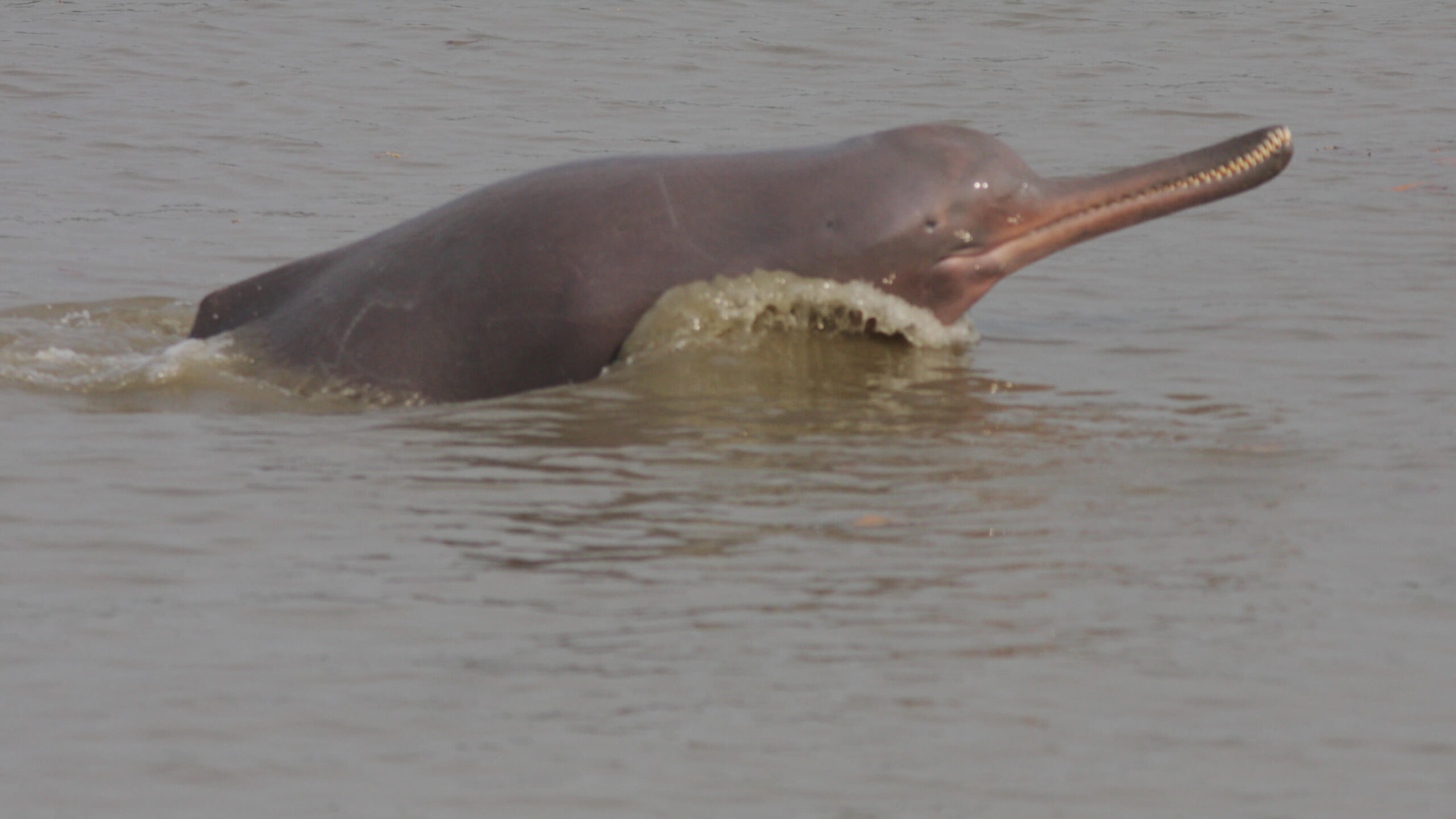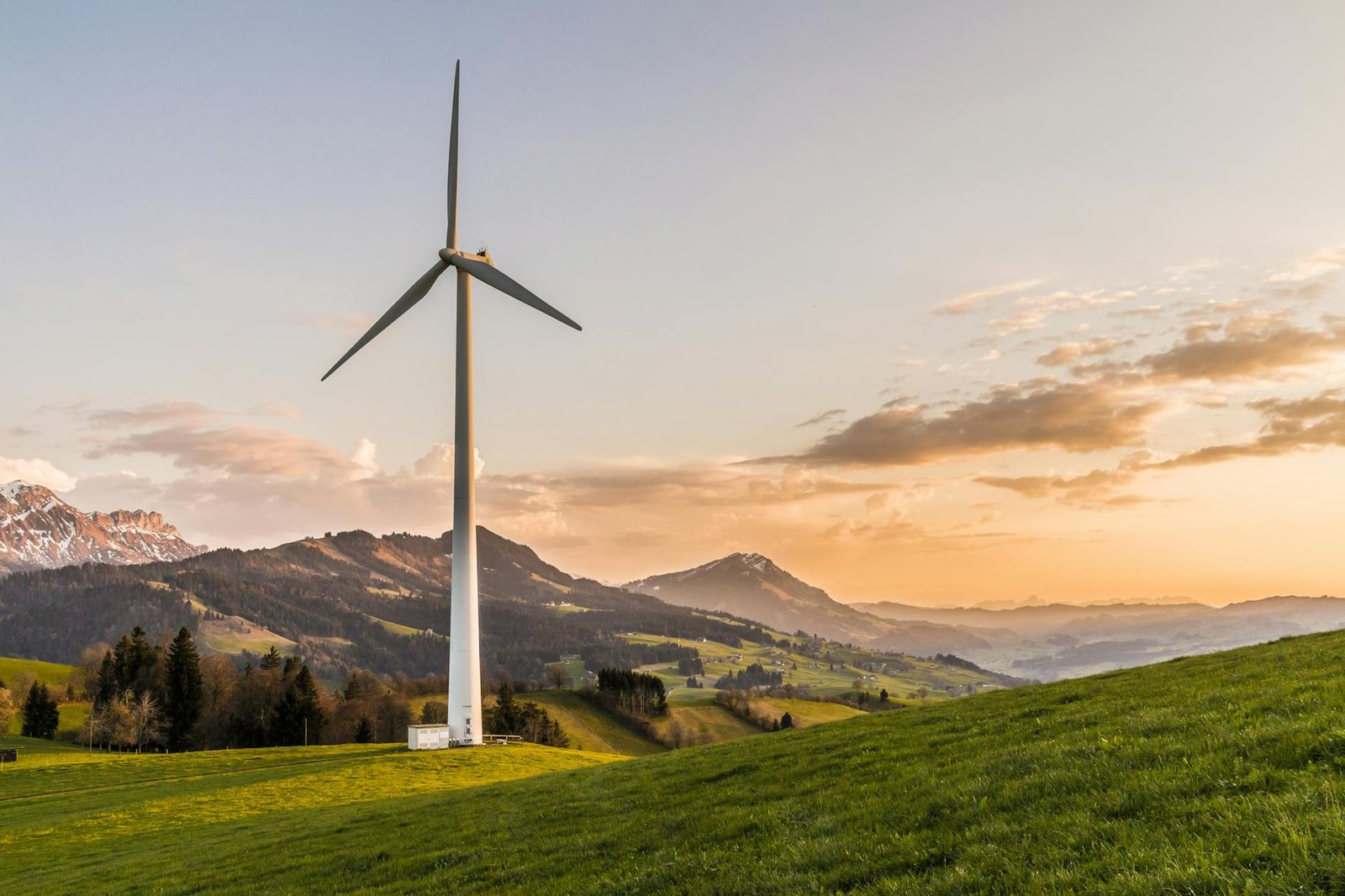Environment
With Beas pollution down, rare Indus river dolphins spotted
Published
5 years agoon

With Beas pollution down, rare Indus river dolphins venturing out.
With reduced human activities and improvement of water quality of the Beas during Covid-19 lockdown, Indus river dolphins — one of the world’s rarest mammals — are being sighted more regularly at Beas Conservation Reserve and have also started venturing out to other areas, as far as about 50km away from its hotspots in the Beas.

Two of the four freshwater dolphin species in the world are found in India. These are the Ganges and Indus river dolphins. Beas Conservation Reserve in Punjab is home to the only population of Indus river dolphins in the country.
There has been stamped improvement in the water nature of the Beas in the course of the most recent one month. A week ago, Punjab Pollution Control Board (PPCB) directed an overview of water quality and said that the stream not, at this point fell in the dirtied classification.
Field observations by the wildlife department and ‘dolphin mitras’– a network of riparian communities trained to monitor river health by WWF-India — reveal that the Indus river dolphins were being sighted more often at the hotspots in Gharka and Karmowala villages falling in Tarn Taran district and occasionally in Harike Wildlife Sanctuary.
The teams spotted one to four dolphins per sighting. However, no calves were seen along with the adults or sub-adult dolphins. Dolphin sightings are most common between 12pm and 3pm at the hotspots.
Naming the regular spotting of dolphins as a cheering sign, Dr Kuldip Kumar, head boss conservator of woods, untamed life and boss natural life superintendent of Punjab said that notwithstanding Beas Conservation Reserve, dolphins are likewise wandering into the Harike Wildlife Sanctuary. “Natural life division groups have additionally detailed sightings of sympatric species like gharial, turtles and smooth-covered otters alongside Indus stream dolphins,” said Dr Kumar.
Buoyed by the sightings, the wildlife department has planned to conduct a detailed species assessment after lifting of Covid-19 restrictions. To ensure the safety of wildlife and to prevent illegal activities in the protected area, the department is conducting active patrolling.
Dr Gitanjali Kanwar, coordinator, WWF-India, said, “Dolphin mitras living on the banks of the Beas are acting as ears and eyes for us to understand the ground reality amidst the ongoing Covid-19 situation. WWF-India and wildlife department trained and formed a network of friends of Beas in 30 villages around Beas Conservation Reserve starting from 2018.”
Credit:TimesofIndia
Why The Humanity Post?
The World Health Organisation has named depression as the greatest cause of suffering worldwide. In the U.S., 1 out of 5 deals with depression or anxiety. For youth, that number increases to 1 in 3.
The good news is that 40% of our happiness can be influenced by intentional thoughts and actions, leading to life changing habits. It’s this 40% that The Humanity Post help to impact.
Related
Sustainability
10 Innovations Revolutionizing Business with Sustainable Business Solutions
Published
5 months agoon
January 27, 2025
In an era where sustainability is paramount, businesses are increasingly adopting innovative solutions to reduce their environmental footprint. These advancements not only contribute to a healthier planet but also drive efficiency and profitability. Here are ten groundbreaking innovations that are revolutionizing the business world with sustainable business solutions.
1. Renewable Energy Integration

The shift towards renewable energy sources like solar, wind, and hydroelectric power is one of the most significant changes in the business landscape. Companies are installing solar panels, wind turbines, and other renewable energy systems to power their operations. This transition not only reduces carbon emissions but also lowers energy costs in the long run.
2. Electric and Autonomous Vehicles
The transportation sector is undergoing a transformation with the advent of electric vehicles (EVs) and autonomous driving technology. Businesses are incorporating EVs into their fleets to reduce greenhouse gas emissions and fuel costs. Autonomous vehicles, on the other hand, promise to optimize routes and reduce traffic congestion, further lowering the environmental impact.
3. Circular Economy Practices
The circular economy model focuses on reusing, refurbishing, and recycling materials to minimize waste. Businesses are redesigning products with longer lifecycles and creating take-back programs to ensure materials are recovered and reused. This approach reduces the demand for raw materials and lessens the environmental burden of waste disposal.
4. Green Building Technologies
Sustainable architecture and construction practices are becoming mainstream. Green buildings incorporate energy-efficient designs, materials, and technologies to reduce energy consumption and enhance indoor environmental quality. Features like smart HVAC systems, LED lighting, and green roofs are now common in modern commercial buildings.
5. Smart Grids and Energy Management Systems
Smart grids and advanced energy management systems enable businesses to monitor and optimize their energy usage in real-time. These technologies use sensors, IoT devices, and data analytics to improve energy efficiency, reduce waste, and lower operational costs. They also facilitate the integration of renewable energy sources into the power grid.
6. Carbon Capture and Storage (CCS)
Carbon capture and storage technology captures CO2 emissions from industrial processes and stores them underground or uses them in other applications. This innovation helps businesses significantly reduce their carbon footprint and meet regulatory requirements. CCS is particularly beneficial for industries with high carbon emissions, such as manufacturing and energy production.
7. Sustainable Supply Chain Management
Sustainable supply chain practices involve sourcing materials responsibly, reducing waste, and optimizing logistics to minimize environmental impact. Companies are adopting blockchain technology to enhance transparency and traceability in their supply chains, ensuring that suppliers adhere to sustainability standards.
8. Water Conservation Technologies

Water scarcity is a growing concern, and businesses are implementing innovative solutions to conserve this precious resource. Technologies like rainwater harvesting, greywater recycling, and advanced irrigation systems help companies reduce water usage and improve efficiency in their operations.
9. Biodegradable and Eco-friendly Materials
The development of biodegradable and eco-friendly materials is transforming product design and packaging. Businesses are replacing traditional plastics with biodegradable alternatives made from plant-based materials. This shift reduces plastic pollution and promotes a more sustainable approach to product manufacturing.
10. AI and Machine Learning for Sustainability
Artificial intelligence (AI) and machine learning are powerful tools for driving sustainability. These technologies analyze vast amounts of data to identify patterns and optimize processes for energy efficiency, waste reduction, and resource management. AI-driven insights help businesses make informed decisions that align with their sustainability goals.
Conclusion
The integration of these innovative technologies and practices is paving the way for a greener future in the business world. By adopting sustainable business solutions, companies can not only reduce their environmental impact but also enhance their operational efficiency and profitability. Embracing these advancements is essential for businesses aiming to thrive in an increasingly eco-conscious market.
FAQs
Q1: How can small businesses adopt these sustainable business solutions?
Small businesses can start by implementing energy-efficient practices, such as switching to LED lighting and optimizing their energy use. They can also explore local renewable energy options and adopt sustainable supply chain practices.
Q2: What are the financial benefits of going green?
Going green can lead to significant cost savings through reduced energy and water consumption, lower waste management costs, and potential tax incentives for sustainable practices. Additionally, it can enhance a company’s brand image and attract environmentally conscious customers.
Q3: Are there government incentives for adopting sustainable business solutions?
Yes, many governments offer incentives such as tax credits, grants, and subsidies to encourage businesses to adopt sustainable business solutions. It’s advisable to check local regulations and programs for available incentives.
Q4: How can AI help in reducing a company’s carbon footprint?
AI can analyze data to identify inefficiencies and recommend improvements in energy usage, supply chain management, and resource allocation. This helps businesses optimize their operations and reduce their overall carbon footprint.
Q5: What role do consumers play in encouraging businesses to adopt sustainable practices?
Consumers play a crucial role by choosing to support businesses that prioritize sustainability. Their purchasing decisions can drive companies to adopt greener practices and invest in sustainable technologies.
By embracing these innovations, businesses can contribute to a more sustainable future while also reaping the benefits of increased efficiency and profitability.
Related

Climate change has a profound impact on everyday life, touching various aspects of our routines and experiences.Climate change has a wide range of impacts that can be observed in everyday life. Here are some examples:

- Extreme weather events: Increased frequency and intensity of extreme weather events such as hurricanes, droughts, heatwaves, and heavy rainfall are linked to climate change. People may experience more severe storms, prolonged periods of heat, or increased instances of flooding.
- Rising temperatures: Climate change is causing global temperatures to rise. This can lead to heatwaves, making it uncomfortable and potentially dangerous to be outdoors for extended periods. It can also impact agriculture, water resources, and ecosystems.
- Changing seasons: Climate change can alter the timing and duration of seasons. For example, spring may arrive earlier, affecting the growth and blooming patterns of plants and the timing of animal migrations.
- Sea level rise: Due to melting glaciers and thermal expansion of seawater, sea levels are rising globally. This can lead to coastal erosion, flooding, and saltwater intrusion into freshwater resources, impacting communities in coastal areas.
- Changes in precipitation patterns: Climate change affects rainfall patterns, leading to more intense rainfall in some areas and droughts in others. This can have consequences for agriculture, water availability, and the risk of wildfires.
- Shifting ecosystems: Climate change can disrupt ecosystems as species struggle to adapt to changing conditions. This can result in changes in the distribution of plant and animal species, affecting biodiversity and ecosystem services.
- Health impacts: Climate change can affect human health directly and indirectly. Increased heatwaves can cause heat-related illnesses, while changing disease patterns may expose populations to new or expanded health risks, such as the spread of vector-borne diseases.
- Food production and availability: Climate change can impact agricultural productivity due to changes in temperature, rainfall, and growing seasons. This can lead to reduced crop yields, affecting food availability and prices.
- Energy consumption: Changes in climate can influence energy demand and consumption patterns. For example, increased use of air conditioning during heatwaves or additional energy required for heating in colder regions can impact energy usage and greenhouse gas emissions.
- Migration and displacement: Climate change can contribute to population displacement as people are forced to leave their homes due to rising sea levels, droughts, or other environmental changes.
- Changes in water availability: Climate change can affect water resources, leading to water scarcity or reduced water quality. This can impact drinking water supplies, agriculture, and industrial processes.

- Increased air pollution: Climate change can worsen air quality as higher temperatures and changing weather patterns can increase the formation of ground-level ozone and particulate matter, which can harm human health.
- Disrupted transportation: Extreme weather events, such as storms or heavy rainfall, can disrupt transportation systems, causing delays, road closures, and damage to infrastructure. This can impact daily commutes and travel plans.
- Increased allergies and respiratory issues: Climate change can affect the timing and distribution of pollen-producing plants, leading to longer and more intense allergy seasons. Additionally, worsening air quality can exacerbate respiratory conditions.
- Impact on recreational activities: Climate change can affect recreational activities such as skiing, snowboarding, and ice skating as warmer temperatures and reduced snowfall can shorten winter seasons and limit snow availability.
- Changes in fishing and seafood industries: Climate change can impact marine ecosystems, affecting fish populations and the livelihoods of fishermen. This can result in changes in the availability and cost of seafood.
- Loss of natural landmarks and ecosystems: Rising sea levels and coastal erosion can lead to the loss of iconic natural landmarks and habitats, impacting tourism and the beauty of local environments.
- Increased insurance costs: As extreme weather events become more frequent and severe, insurance companies may raise premiums for property insurance, affecting homeowners and businesses.
- Changes in gardening and agriculture: Climate change can affect gardening practices and agricultural techniques as farmers and gardeners need to adapt to shifting weather patterns, changing growing seasons, and new pests or diseases.
- Psychological and emotional impacts: Climate change can have psychological effects on individuals, such as eco-anxiety, grief for the loss of natural environments, and concerns about the future. These emotional impacts can affect overall well-being and mental health.

Climate change is a global challenge that requires collective efforts from governments, organizations, and individuals. By understanding the tangible effects of climate change in our daily lives, we can empower ourselves to make informed choices and contribute to creating a sustainable and thriving planet for future generations. Let’s take action today to safeguard our environment and create a better tomorrow.
Related
Environment
The Urgency of Environmental Sustainability: Consequences of Failure
Published
2 years agoon
June 12, 2023
In today’s rapidly changing world, environmental sustainability has become a pressing concern. Failing to prioritize and maintain sustainable practices can lead to severe repercussions for our planet and all its inhabitants. In this blog post, we will explore the potential consequences of neglecting environmental sustainability and shed light on why it is crucial to act now to secure a sustainable future.

- Climate Change: A Ticking Time Bomb Climate change stands as one of the most critical challenges we face. Failure to address sustainability issues contributes to the rise in greenhouse gas emissions, resulting in adverse effects such as soaring global temperatures, erratic weather patterns, and an increase in natural disasters. The consequences of climate change are far-reaching, impacting ecosystems, economies, and human lives.

- Loss of Biodiversity: A Threat to Ecosystems Environmental sustainability is closely intertwined with the conservation of biodiversity. Ignoring sustainable practices threatens the delicate balance of ecosystems, leading to the extinction of plant and animal species. This loss of biodiversity disrupts ecosystem services vital for our survival, including pollination, nutrient cycling, and natural pest control. The consequences can be dire, affecting food security and overall human well-being.

- Resource Depletion: A Race Against Time Unsustainable practices such as overexploitation of natural resources jeopardize their regeneration capacity. Forests, fisheries, and freshwater sources are being depleted faster than they can recover. This scarcity creates a domino effect, triggering increased competition, conflicts, and economic instability. Conserving our resources is crucial for sustainable development and the preservation of future generations.

- Pollution and Health Impacts: A Silent Threat Neglecting environmental sustainability results in pollution of our air, water, and soil. Rising pollution levels have a direct impact on human health, causing respiratory issues and other ailments. Wildlife and ecosystems suffer as well. Contaminated water sources, for instance, can lead to waterborne diseases and hinder agricultural productivity. A healthy environment is the foundation for a healthy society.
- Economic Consequences: Counting the Cost Failure to achieve environmental sustainability carries economic consequences. The costs associated with environmental damage, such as cleaning up polluted areas and healthcare expenses, can be substantial. Moreover, the depletion of natural resources hampers economic growth, disrupts supply chains, and affects industries reliant on ecosystem services. Prioritizing sustainability is an investment in our long-term economic stability.
- Social Inequities: Navigating Environmental Justice Environmental degradation disproportionately impacts vulnerable communities, deepening social inequalities. Poor waste management practices, for example, burden marginalized communities, leading to environmental injustice. Climate change-induced events like sea-level rise result in forced displacement and create climate refugees, further magnifying existing social challenges. A sustainable future requires equity and justice for all.

Conclusion: The consequences of failing to maintain environmental sustainability are multifaceted and far-reaching. Climate change, loss of biodiversity, resource depletion, pollution, economic repercussions, and social inequities all stem from neglecting sustainable practices. It is essential to prioritize environmental sustainability to safeguard our planet and ensure a better future for generations to come. Embracing sustainable solutions and taking collective action is the key to mitigating these risks and building a resilient and thriving world. Let us act now for a sustainable and prosperous tomorrow.
Related
LATEST NEWS


5 Powerful Community Action Impact Strategies: How Local Initiatives Drive Global Change
The Power of Community Action Impact Community action impact is revolutionizing how we approach social change. According to research from...


10 Innovations Revolutionizing Business with Sustainable Business Solutions
In an era where sustainability is paramount, businesses are increasingly adopting innovative solutions to reduce their environmental footprint. These advancements...


Everybody Wants Gaza’s Gas
While its citizens take to the streets demanding a ceasefire, the silence of Europe’s leaders is deafening. Ally-ship runs deep,...


Basic sciences for sustainable development challenges and prospects
Basic sciences play a crucial role in sustainable development by providing the foundation for understanding the challenges we face and...


Climate Change Impacts in Everyday Life
Climate change has a profound impact on everyday life, touching various aspects of our routines and experiences.Climate change has a...


The Urgency of Environmental Sustainability: Consequences of Failure
In today’s rapidly changing world, environmental sustainability has become a pressing concern. Failing to prioritize and maintain sustainable practices can...


Understanding Good Manufacturing Practices (GMP): Guidelines for Quality & Safety
Good Manufacturing Practices (GMP) are a set of guidelines designed to uphold the quality, safety, and efficacy of products manufactured...
ENTERTAINMENT


‘Being Haangryy’ Salman Khan’s New Initiative
Salman Khan Launches New Initiative ‘Being Haangryy’ To Provide Food To The Needy, Wins Hearts Salman Khan is a man with a big heart....


5 Coronavirus good news stories
coronavirus good news stories 1 1.Ariana Grande, Taylor Swift And Britney Spears Help Out Struggling Fans While there have been...




